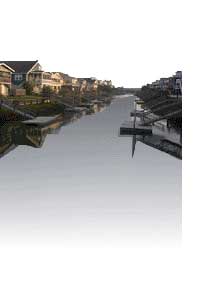The Tataviam, also known as the Fernandeņo, tribe of Indians and the Tongva had inhabited the valley for almost 2,000 years before the Spanish built the San Fernando Mission in 1797.
The treaty ending the Mexican-American War in California was signed in the Cahuenga Pass (at the southeast corner of San Fernando Valley) at the Campo de Cahuenga in 1847.
After the construction of the Owens Valley-Los Angeles Aqueduct, the mostly rural area was annexed by the city of Los Angeles in 1915 more than doubling the size of the city.
Los Angeles continued to consolidate its territories in the San Fernando Valley by annexing Laurel Canyon (1923), Lankershim (1923), Sunland (1926), Tuna Canyon (1926), the incorporated city of Tujunga (1932), and Porter Ranch (1965). The additions expanded the Los Angeles portion of San Fernando Valley from the original 169 square miles to 224 square miles today. Five cities incorporated
independent from Los Angeles: Glendale (1906), Burbank (1911), San Fernando (1911) Hidden Hills (1961), Calabasas (1991). Universal City is an unincorporated enclave that is home to Universal Studios theme park and Universal CityWalk.
BOOM TOWNS
In the 1880s and '90s, more towns opened joined
San Fernando on the map. Burbank,
Glendale, Pacoima, Calabasas and Chatsworth
Park opened. Some names didn't last: Dundee,
Monte Vista, Oat Hills. The town of Toluca, later renamed Lankershim and then North
Hollywood, came to life on the eastern reach of the original Isaac Lankershim wheat empire. Blessed with deep
loam and abundant ground water, the area was great for peach growing and prospered.
The Valley began to attract more settlers. An
Italian immigrant, C.J. Rinaldi, cultivated orange groves west of San Fernando,
which grew large enough that the town built itself a high school. The Southern Pacific added a second railroad diagonally
across the Valley floor from Burbank to Chatsworth that became the coastal route up California. Automobiles showed up in 1898.
By the start of the 20th century, the Valley was
still scantly populated: fewer than 3,000 people on a plain of more than 200 square miles. That would soon change.
